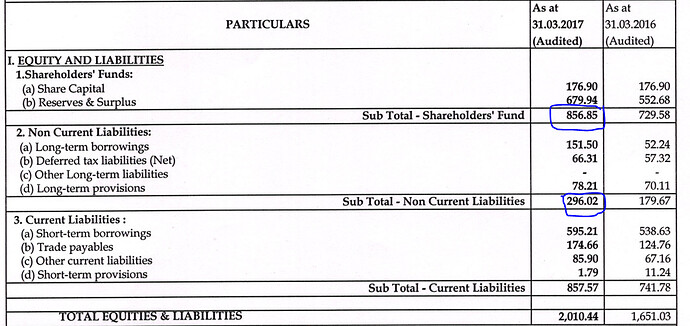ROCE measures how much money the business earns, independent of its capital structure. The text book formula for ROCE is EBIT / Capital Employed. Different people have used different approaches to calculate ROCE. There is no right or wrong answer but the main thing is to maintain consistency.
Given below is the method I prefer to follow, others are welcome to comment how they find this approach.
A: Capital Employed
Look at the asset side of the balance sheet to find out where capital has been employed. For a normal manufacturing business this means 1) Fixed assets and b) Working capital.
-
Fixed Assets: Take fixed assets at gross level, because that was the amount which was actually spent when the assets were bought. FA should include intangibles like patents, IP, goodwill etc. but exclude capital work in progress since it is yet to generate returns. Standard text books use Net Fixed Assets which I consider wrong. Net Fixed Assets is a fictional number.
-
Working capital: This is current assets minus current liabilities. Let us break this down.
a. Current Assets: Take all current assets as given in the balance sheet. Also add such items which are classified non-current just because they are realizable in more than 1 year, but we know they are in the “normal” course of business. Examples of these are staff loans, deposits given to dealers, advances with government authorities for tenders etc. Add all of them judging each item individually.
b. Current Liabilities: Take all current liabilities as given in balance sheet. Add liabilities which are in the “normal” course of business but have been classified as non-current just because they are technically for more than one year e.g. advances received from dealers etc.
c. Now (a) minus (b) above gives the working capital deployed in business. I exclude deferred tax assets / liabilities from all the above.
Fixed assets plus working capital as calculated above gives the capital employed in business as on the balance sheet date. But since returns are generated over the course of the year, take opening & closing balances of each of the above and divide by two (opening balance is nothing but previous year’s balance sheet figure). This gives the “average” capital employed during the year. This is the denominator in the formula.
Now let us come to the numerator.
B: Returns
Here we want to find out how much money the business operation made. EBIT is usually easily available in the P & L Statement (PBT plus Interest). But make one adjustment:
- Add back accounting depreciation and deduct maintenance capex.
a. Maintenance capex: Total capex is available in the cash flow statement. From this, spending specific to expansion / acquisition etc. should be removed. Expansion capex will be available somewhere such as in the Annual Report, analyst concalls, management interviews etc. If nothing can be inferred from any source, assume all capex is maintenance capex. Also look at past trends for this.
This gives the numerator.
Now calculate the ROCE as “B” divided by “A”.



